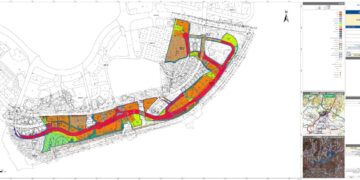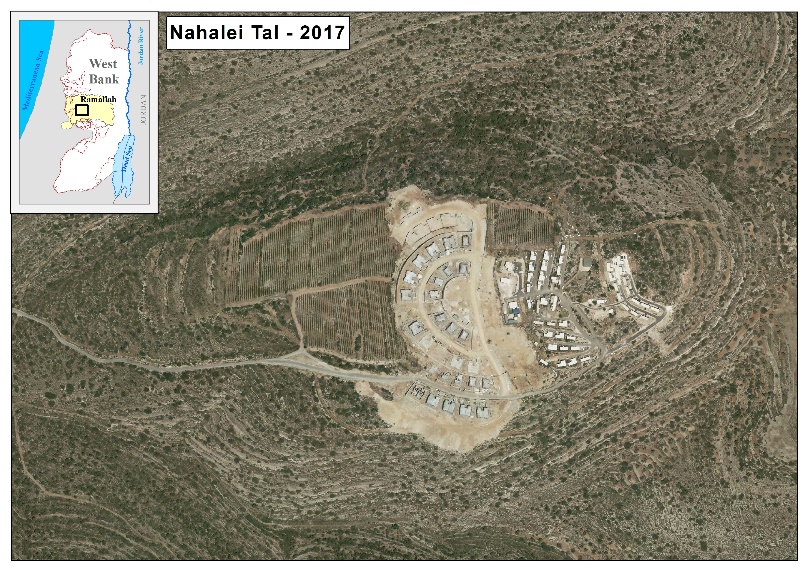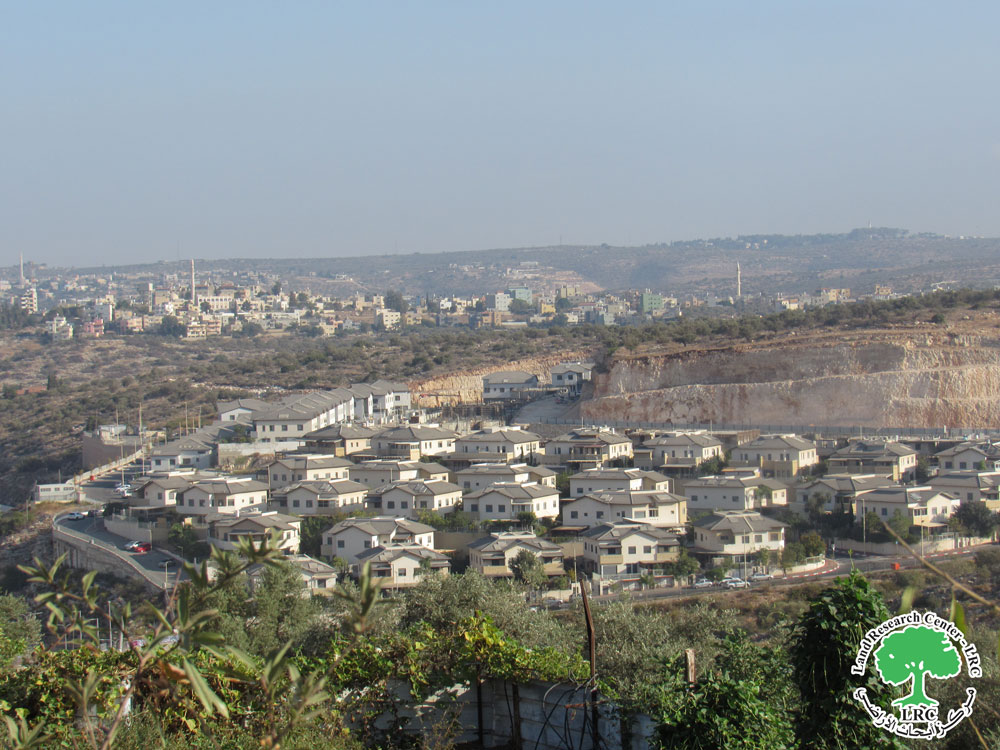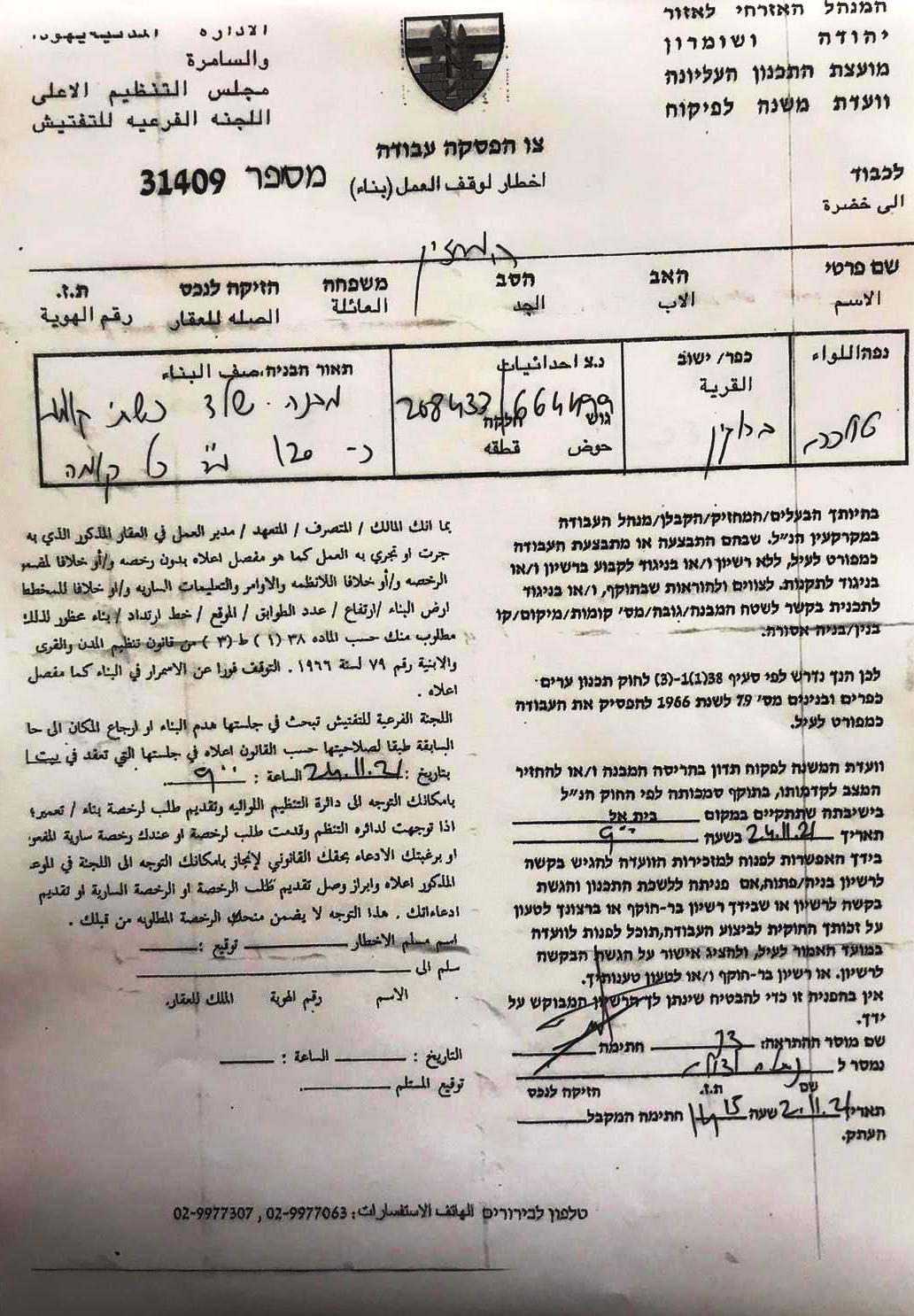- Violation: New Colonial block established.
- Location: Jayyous town / Qalqilya governorate.
- Date: November 1st 2021.
- Perpetrators: “Tzofim” colonists.
- Victims: People of the town.
Description:
The Israeli Occupation ravaged pastoral lands east Tzufim colony in Jayyous town east Qalqilya.
In 28th October 2021, It was reported that the occupation already levelled more than 45 dunums of Jayyous lands in natural block (3). Noteworthy , The occupation categorizes the targeted lands as state properties in their records , four dunums of which belongs to farmer Fakhri Shamasna , that the occupation authorities had confiscated and announced as state properties.
Noteworthy, The Israeki government had installed foundations to build colonial units related to the illegal colony Tzufim , after the construction, the colony will double its size . Noteworthy, during the past few years the government offered many tenders to expand the colony.


 Photos 1-3: Expansions at the colony
Photos 1-3: Expansions at the colony
Tzufim colony was built on a hill at a “strategic location” that over views the Palestinian cost at the occupied territories and adjacent to the green line. The illegal colony receives large support from the Israeli government. Part of that support is represented in confiscating lands from Palestinians, to expand the colony.
About “Tzufim” settlement:
“Tzufim” was established in 1990 on confiscated lands from Jayous village , the settlement ate up about 890 dunums of the village , and consists of 2422 settlers until the end of 2018, it has a built up area of about 869 dunums.
Jayyous:
Jayyous is located 10 km to the northeast of Qalqiliya city and is edged Falamya village from the north, Zufin colony the west, Khirbet Jabir from the east and Izbet Al-Tayeb from the south.
Its population mounts to 3731 (2014 census) people who live on a total land of 10,925 dunums, of which 418 dunums are considered the village’s built-up area.
Israeli colonies confiscated 724 dunums from Jayyous lands. Zufin colony that was established in 1990 is founded on confiscated lands from the village.
The apartheid wall is founded on 1045 dunums from the area and was reported to isolate 6,496 dunums behind its construction.
The lands of Jayyous hamlet are classified according to Oslo Accords as the following:
- 3128 dunums (29%) are classified as area B
- 7707 dunums (71%) are classified as area C
United Nations General Assembly resolutions on Israeli settlement
- United Nations General Assembly resolution of 20/1/1972, in which it demanded that Israel is asked to stop a number of measures and practices, including (building Israeli settlements in the occupied Arab territories and transferring some of the civilian population from Israel to the occupied Arab territories).
- United Nations General Assembly resolution of 15/12/1972, in which the General Assembly requested Israel to stop annexing any part of the occupied Arab territories, establishing settlements in those lands, and transferring the population to them.
- United Nations General Assembly of 7/12/1973, in which the General Assembly expressed its grave concern over Israel’s violation of the provisions of the Fourth Geneva Convention of 1949 and all measures taken by Israel to change the features of the occupied territories or their demographic composition, and considered them a grave violation of international law.
- United Nations General Assembly Resolution of 29/11/1974 in which the General Assembly expressed its deepest concern over the annexation by Israel of some parts of the occupied territories, the establishment of settlements and the transfer of residents to them.
- United Nations General Assembly resolution of 15/12/1975, consisting of four sections, and in the first section it condemned all the measures that Israel practices in the occupied territories, describing these practices as serious violations of the United Nations Charter and an obstacle to the establishment of a lasting and just peace in the region, stressing that these procedures are null and void, and have no basis of legitimacy.
- General Assembly Resolution of 28/10/1977, which affirmed in its first clause that all measures and actions taken by Israel in the Palestinian territories and other Arab territories occupied in 1967 are legally untrue, and are a serious obstruction to the endeavors to reach a just and permanent peace in the Middle East. The General Assembly also deeply regrets that Israel continues to implement these measures, in particular the establishment of settlements in the occupied Arab territories.
- United Nations Security Council Resolution 478, adopted on 20 August 1980, is one of two General Assembly resolutions [1][2] followed by seven UNSC resolutions condemning Israel’s attempted annexation of East Jerusalem. In particular, UNSC res 478 notes Israel’s non-compliance with United Nations Security Council Resolution 476[3] and condemned Israel’s 1980 Jerusalem Law which declared Jerusalem to be Israel’s “complete and united” capital, as a violation of international law. The resolution states that the Council will not recognize this law, and calls on member states to accept the decision of the council. This resolution also calls upon member states to withdraw their diplomatic missions from the city.
- In resolution 2334 (2016), the Security Council reaffirmed that the establishment by Israel of settlements in the Palestinian territory occupied since 1967, including East Jerusalem, had no legal validity and constituted a flagrant violation under international law and a major obstacle to the achievement of the two-State solution and a just, lasting and comprehensive peace. In the same resolution, the Council reiterated its demand that Israel immediately and completely cease all settlement activities in the Occupied Palestinian Territory, including East Jerusalem, and that it fully respect all of its legal obligations in that regard. No such steps were taken during the reporting period.
Prepared by
The Land Research Center
LRC














